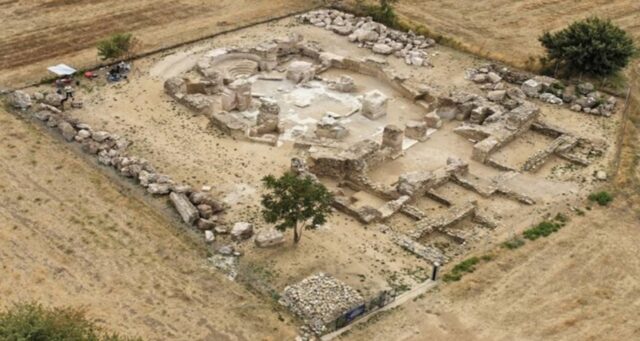ATHENS – GNUSA
The Ministry of Culture is proceeding with the restoration and upgrading of the central-plan church within the archaeological site of Maximianoupolis, a historically significant city in the Rhodope plain of Thrace.
The project, backed by €1.5 million in funding from the Recovery and Resilience Facility, aims to preserve and upgrade key architectural elements of the monument: the marble iconostasis, the northern and southern arcosolia, and the southwestern corner of the narthex.
According to a press release issued by the Ministry of Culture, the restoration addresses several critical challenges, including the monument’s moderate preservation state, significant structural deterioration, loss of building materials, visible deformations, and overall instability.
It also includes conservation of frescoes, flooring, and improved accessibility.
The church, notable for its rare irregular hexagonal shape, featured painted decoration, preserved only in fragments and at low height, as well as rich sculptural ornamentation—including the iconostasis, a marble pulpit and synthronon—parts of which remain in situ. Excavations between 1999 and 2008 uncovered extensive burials, dating to post-11th century periods.
“The historical significance of Maximianoupolis is undeniable, despite the fact that it suffered complete destruction and was abandoned in the 13th century”, stated Culture Minister, Lina Mendoni, adding that “with the completion of the project, another important monument is added to the cultural map of Rhodope”.
Maximianoupolis (later known as Mosynopolis) was a fortified city in the Aegean Thrace, near present-day Komotini. It was founded by Emperor Maximian and flourished from the 4th century AD, featuring strong defensive walls and playing a significant ecclesiastical role as the seat of a bishop and later as an autocephalous archbishopric. The city was permanently destroyed following the raid of Tsar Ivan Kaloyan.






